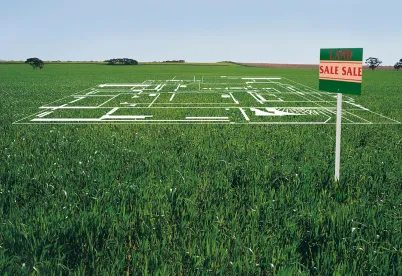Frequently, land litigation—land boundary and ownership claims - is a controversy concerning the use of land. The recent case of Hedgepeth v. Parker’s Landing Property Owners Association, Inc. ___ N.C. App. ___ ___ S.E.2d ____(2016 WL 47700) illustrates the thin line between land litigation and land use controversies.
Background
In Hedgepeth, plaintiff and Parker’s Landing Property Owners Association (“POA”) are neighbors. Plaintiff desires to develop his property as a residential subdivision, but must possess sufficient access to a public street to secure development approvals from Currituck County. The only access from plaintiff’s property to a public road lies on the POA’s property.
1. The Federal Lawsuit and Claims of Easements Across Plaintiff’s Property
In 2007, plaintiff commenced a federal lawsuit asserting possession of one or more easements across the POA’ property based upon a variety of legal theories: express easement, easement by necessity, implied easement, easement by equitable estoppel and quasi-estoppel – estoppel by acceptance of the benefits. In 2009, the Federal District Court found plaintiff owned two limited historical easements across the POA’s property.
The relief granted by the federal court was unsatisfactory to plaintiff. The easements were limited to agricultural purposes and narrow. Development of plaintiff’s property as a residential subdivision remained impossible. Plaintiff appealed this decision to the Fourth Circuit Court of Appeals and the Fourth Circuit affirmed the decision in 2010.
2. The State Court Lawsuit and Claim of Boundary Line Mislocation
In 2009, plaintiff filed a new land litigation case against the POA and individual Parker’s Landing lot owners in state court. Plaintiff asserted two principal claims. First, plaintiff sought a declaration extending the federal court’s declaration of historic easements to individual lot owners who had not been parties in the federal lawsuit. Second, plaintiff asserted that the common boundary line between his property and the POA’s property was misplaced, giving plaintiff access to a public street because it had been mistakenly built on plaintiff’s property.
This lawsuit triggered a cascade of land litigation lawsuits, claims and dismissals between plaintiff, defendant and individual lot owners. Plaintiff filed a motion for summary judgment on the grounds of res judicata and collateral estoppel, contending that the two easements declared by the federal district court were binding against the POA and various lot owners. The trial court denied plaintiff’s motion and plaintiff appealed to the North Carolina Court of Appeals.
a. The First State Court Appeal
In 2014, the North Carolina Court of Appeals partially affirmed and reversed the trial court’s ruling. Describing the vortex of multiple land litigation cases, claims and dismissals arising from this state court case as a “quagmire”, the Court held that the POA was bound by the federal court’s judgment, held that the lot owners were not bound by the federal court decision because they had not been parties in the federal lawsuit and held that decision in the federal lawsuit did not preclude plaintiff’s boundary law claim on the grounds of res judicata. The parties returned to trial court to litigate the boundary line claim.
b. The Second State Court Appeal
In 2015, the trial court granted the POA’s motion for summary judgment regarding plaintiff’s boundary law claim. Plaintiff appealed to the North Carolina Court of Appeals and in January 2016, the Court of Appeals reversed. The Court of Appeals returned the case to the trial court for further proceedings.
The Court of Appeals’ analysis centered upon application of judicial estoppel, a doctrine formally recognized as part of the common law of North Carolina in 2004. The POA asserted that plaintiff had conceded its ownership of the property on which the road was located in the federal lawsuit and plaintiff was judicially estopped to assert its boundary line claim. The Court of Appeals noted that judicial estoppel does not preclude inconsistent legal theories and in the federal lawsuit “[n]o stipulations were made concerning the underlying ownership or the location of a disputed boundary line.”
Comments
1. These cases illustrate the interplay between governmental development approvals and adequate land rights. Without adequate land rights, governmental approvals are unattainable.
2. Land litigation and land use controversies are similar in one respect. These disputes are between neighbors concerning their enjoyment of their land. Once neighbor relationships are frayed, litigation can be long lived. The parties are in their ninth year of litigation and the litigation continues forward.




 />i
/>i

